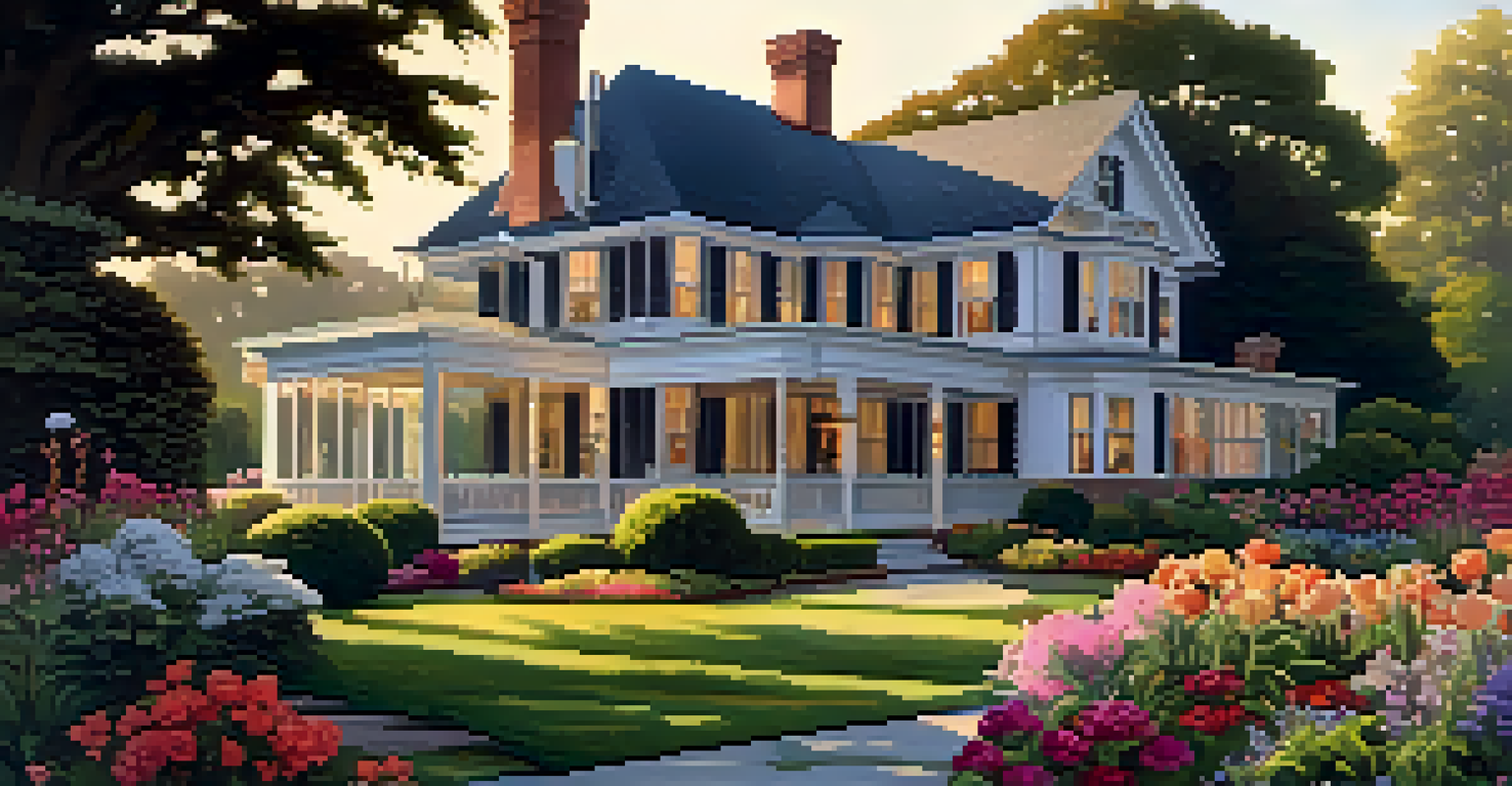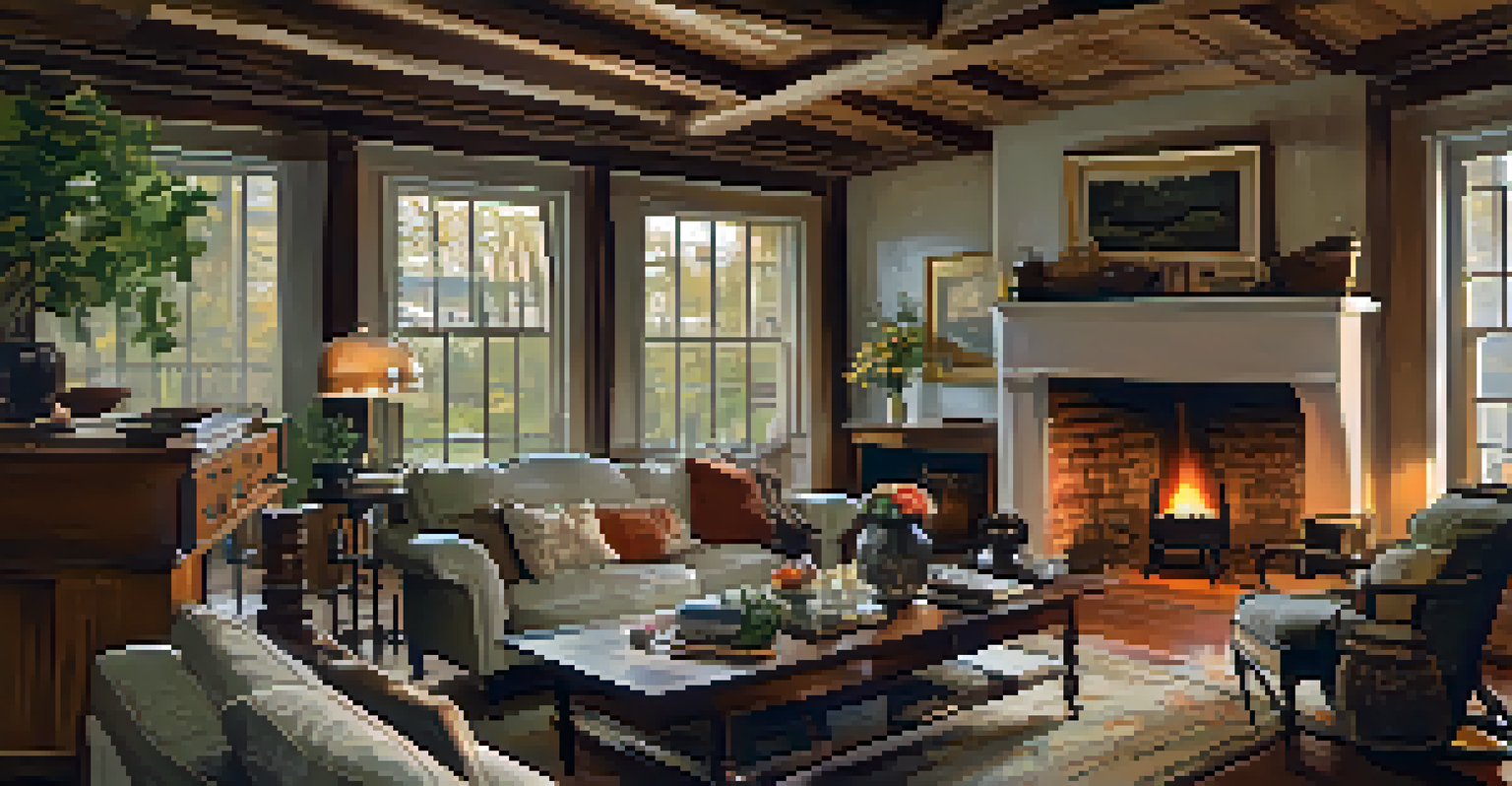Essential Home Maintenance Tasks for Historic Homes

Understand Your Home's Unique Historical Features
Every historic home has its own story, told through its architectural features. Understanding these unique characteristics is crucial for proper maintenance. For instance, knowing whether your windows are original or replacements can influence your repair strategy.
Preservation is a form of empowerment; it allows us to connect with our history and shape our future.
Historic homes often feature materials and designs that are no longer standard today. This means that maintenance tasks might require specialized knowledge or craftsmanship. A little research into your home's history can guide your efforts and help you appreciate its value.
Connecting with local heritage organizations can provide insights into your home’s specific needs. This knowledge empowers you to make informed decisions, ensuring that each maintenance task respects the home’s historical integrity.
Regularly Inspect and Maintain the Roof
The roof is your home's first line of defense against the elements, especially in historic homes where materials may be aged. Regular inspections can catch small issues before they turn into major repairs. Look for signs like missing shingles or leaks, which can compromise both aesthetics and structure.

Consider the materials used in historic roofing, such as slate or tile, which require different maintenance than modern asphalt shingles. Consulting a roofing specialist familiar with historic homes can ensure that repairs are done appropriately, preserving the charm of your property.
Understand Historical Features
Recognizing and appreciating your home's unique historical features is essential for informed maintenance and preservation.
Don’t forget about gutters and downspouts; they play a crucial role in directing water away from the foundation. Cleaning them regularly will prevent water damage and extend the life of your roof, making it a win-win for both maintenance and cost-efficiency.
Inspect and Repair Windows and Doors
Windows and doors are not just functional; they are often focal points that enhance your home's historical character. Regular inspection helps identify issues like drafts, rot, or broken glass. Addressing these problems promptly can improve energy efficiency and comfort.
The best way to preserve a historic building is to keep it in use.
Restoration rather than replacement is typically recommended for historic windows and doors. This means repairing existing structures with materials that match the original, which can be more cost-effective and preserve the home’s integrity.
Consider using storm windows or weatherstripping to enhance energy efficiency without compromising the historic look. These solutions help to maintain your home’s charm while keeping it comfortable year-round.
Maintain the Home's Exterior and Landscaping
The exterior of a historic home needs to be treated with care. Regular cleaning, painting, and sealing can protect the materials from weather-related damage. For instance, wooden siding should be inspected for rot and repainted as needed to preserve its beauty.
Landscaping also plays an essential role in maintaining the home's historical charm. Choose plants and designs that complement the architectural style, ensuring that your outdoor space enhances rather than detracts from your home’s appearance.
Regular Inspections are Key
Frequent inspections of critical elements like the roof, windows, and foundation help prevent costly repairs and maintain structural integrity.
Be mindful of how landscaping affects drainage around your home. Proper grading can prevent water from pooling near the foundation, which protects the structure and maintains its historical integrity.
Check and Maintain the Foundation
Your home's foundation is vital for stability and longevity, especially in historic structures. Regularly checking for cracks or signs of settling can prevent larger issues down the line. A healthy foundation is key to preserving your home’s overall integrity.
Consider the materials used in your foundation; older homes may have stone or brick foundations that require different treatments than modern concrete. Understanding these materials will guide your maintenance efforts and help maintain the home’s historical value.
If you notice significant issues, consult a structural engineer experienced with historic buildings. Their expertise can help you navigate repairs sensitively, ensuring the foundation remains sound while respecting the home's history.
Maintain Plumbing and Electrical Systems
Historic homes often come with unique plumbing and electrical systems that may not meet modern standards. Regular inspections are crucial to ensure safety and functionality. Look for signs of leaks or outdated wiring, which can pose risks to both the structure and its occupants.
When maintaining these systems, prioritize preservation. This might mean restoring original fixtures instead of replacing them, which can keep your home’s character intact. Researching and sourcing period-appropriate parts can be part of the fun!
Balance Upgrades with Preservation
Thoughtful upgrades, when done in harmony with the home's original character, can enhance both functionality and historical value.
Don't hesitate to hire professionals who specialize in historic home systems. Their expertise will help maintain the balance between modern convenience and historical authenticity, ensuring your home remains safe and comfortable.
Create a Home Maintenance Schedule
Establishing a maintenance schedule is a great way to keep your historic home in top shape. Break tasks down into seasonal, monthly, and yearly activities. This organized approach helps ensure that nothing gets overlooked and that each element of your home receives attention.
Incorporate a mix of tasks, from simple inspections to more involved repairs, to keep your home well-maintained. For example, you might check the roof before winter and schedule window repairs for spring. This proactive planning can save you money and stress in the long run.

Consider using digital tools or apps to help track tasks and set reminders. This can make home maintenance feel less daunting and more manageable, allowing you to enjoy your historic home without the worry of neglect.
Preserve Your Home's Historical Value with Upgrades
While historic homes benefit from preservation, some upgrades can enhance both functionality and comfort. Consider energy-efficient windows or modern heating systems that fit within the home's aesthetic. These improvements can help reduce costs while respecting the building's character.
When planning upgrades, aim for solutions that blend with the existing style. For instance, using period-appropriate fixtures in bathrooms or kitchens can maintain the overall charm while providing modern amenities. This thoughtful approach can enhance both the value and livability of your home.
Consulting with preservation specialists can help you make informed decisions about which upgrades are appropriate. Their guidance ensures that your enhancements respect the home's history while meeting the needs of modern living.